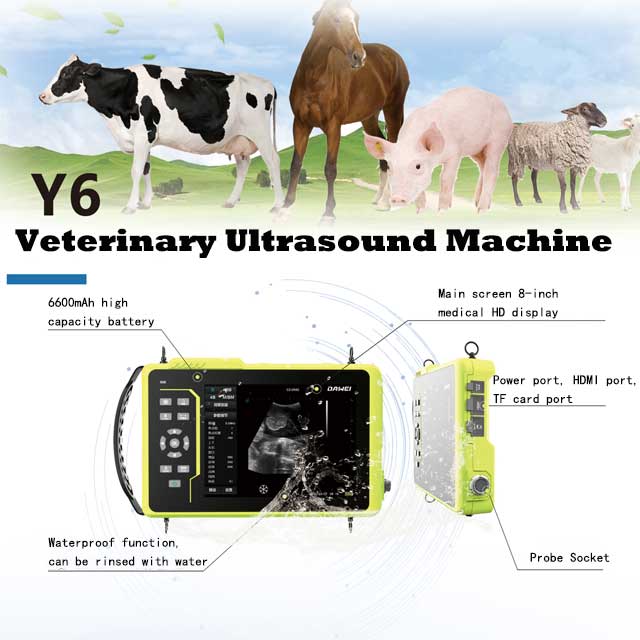Of the many different imaging features of veterinary ultrasound for cattle, the most important ones may include portability and durability.
In an emergency, when you have to rush to a sick cow, a lightweight and easily portable ultrasound machine can save lives and help you get to the animal faster and easier.
In addition, a high-quality bovine ultrasound should be able to withstand light abuse and interference. Due to the nature of the exam and the unpredictable behavior of cattle, ultrasound machines can easily be bumped, shaken or dropped when handling uncooperative animals.
While small handheld ultrasound machines are popular for this reason, they have limitations. Handheld devices have small screens, poor image quality, and limited image optimization capabilities. Larger portable ultrasound machines with better image quality, improved functionality, and more versatility are available for other veterinary needs, such as diagnostic use or musculoskeletal imaging. For zui basic reproductive needs, a handheld or small portable ultrasound machine is usually a good choice.
When shopping for a portable and resistant bovine ultrasound machine, it’s important to get the right bovine ultrasound probe
Just like the ultrasound machine itself, you should choose the right ultrasound transducer (also known as a probe) wisely. The transducer must be durable and able to withstand the unpredictability of the bovine rectum, but that’s not the only feature to check when choosing the right bovine ultrasound transducer.
For reproduction of bovine animals, the usual choice is a linear transducer designed specifically for ultrasound of reproductive cattle. This transducer has a very long cable and a more streamlined design that allows for easy insertion of the probe into the cow’s rectum. In addition, the probe is designed to operate at frequencies ideal for imaging reproductive cattle.
Post time: Apr-25-2024




